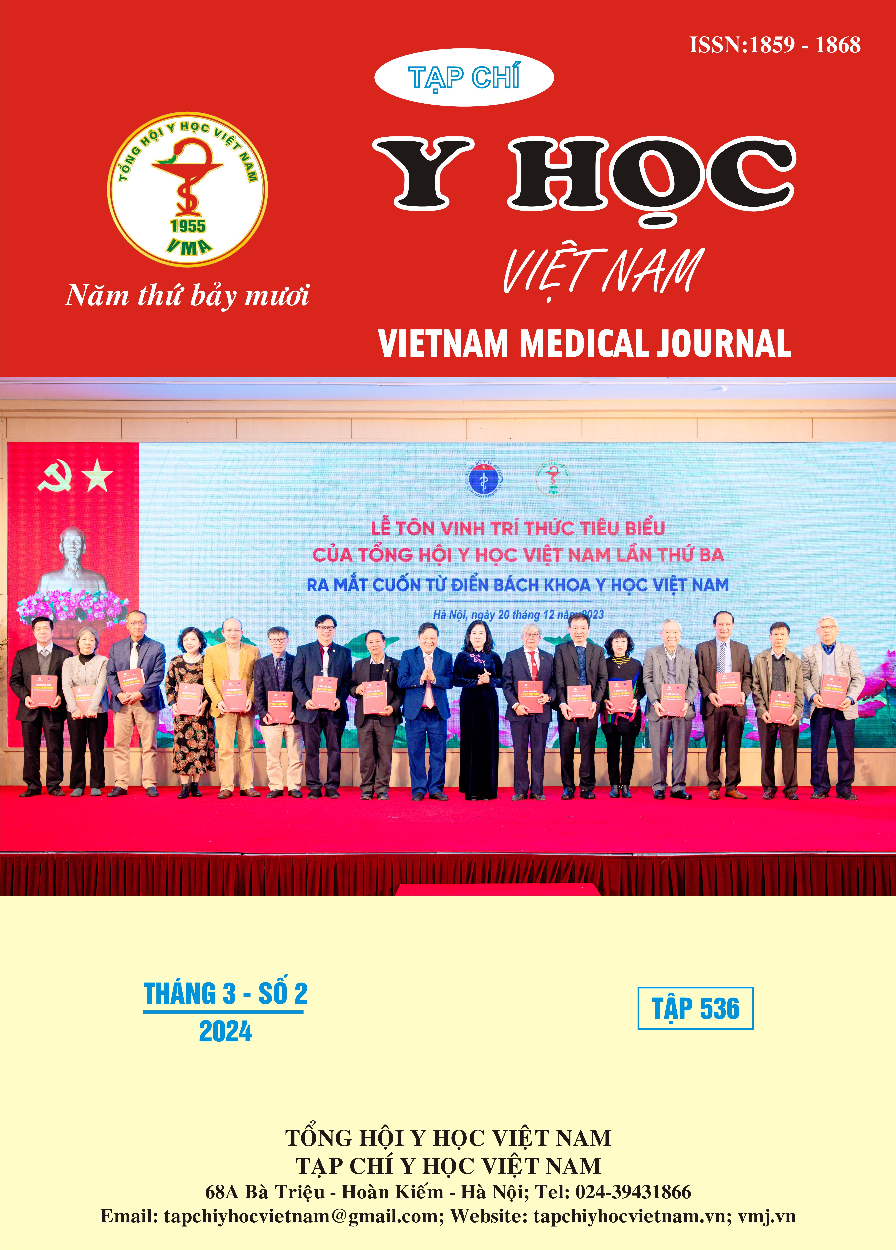ĐÁNH GIÁ KẾT QUẢ PHƯƠNG PHÁP CHỈNH HÌNH CUỐN DƯỚI CÓ TẠO HÌNH VẠT
Nội dung chính của bài viết
Tóm tắt
Mục tiêu: Mô tả kết quả phương pháp phẫu thuật chỉnh hình cuốn dưới tạo hình vạt. Thiết kế nghiên cứu: Tổng quan luận điểm. Phương pháp: Chúng tôi thực hiện tìm kiếm một cách hệ thống trên hệ thống dữ liệu PubMed, Google Scholar, thư viện Đại học Y Hà Nội để xác định tất cả các bài báo gốc liên quan đến phương pháp chỉnh hình cuốn dưới tạo hình vạt. Kết quả nghiên cứu: Có 10 bài báo đủ tiêu chuẩn lựa chọn theo mục tiêu của đề tài nghiên cứu, tỉ lệ bệnh nhân cải thiện triệu chứng ngạt mũi hoàn toàn sau mổ là 24-94,7%, cải thiện độ thông thoáng đường thở hoàn toàn là 94%, biến chứng sau mổ gặp với tỉ lệ ít. Kết luận: Chỉnh hình cuốn dưới tạo hình vạt cho kết quả khả quan mang lại hiệu quả lâu dài cho bệnh nhân trong việc giảm tắc nghẽn mũi mà gặp ít nguy cơ biến chứng.
Chi tiết bài viết
Tài liệu tham khảo
2. Sandhu KS, Singh SP, Thomas O, Choudhary P, Singh A, Singh M. To Study the Long Term Outcome of Endoscopic Septoplasty with Microdebrider Assisted Inferior Turbinoplasty (MAIT) Versus Medial Flap Turbinoplasty (MFT). Indian J Otolaryngol Head Neck Surg. 2022; 74 (Suppl 2):863-869. doi:10.1007/s12070-020-01936-4
3. Ali BH, Awad OGAN, Ibrahim A, Azez AAA. Assessment of safety and efficacy of extraturbinal microdebrider-assisted turbinoplasty versus partial inferior turbinectomy. Egypt J Otolaryngol. 2019;35(1):17-24. doi:10.4103/ejo.ejo_8_18
4. Awad OGA. Safety and efficacy of extraturbinal microdebrider-assisted inferior turbinoplasty in children. Egypt J Otolaryngol. 2019;35(2):140-146. doi:10.4103/ejo.ejo_36_18
5. Gunturu N, Chaudri S, Suryavanshi M. Evaluation of the Efficacy of Turbinoplasty in Isolated Inferior Turbinate Hypertrophy and Allergic Rhinitis Patients with Inferior Turbinate Hypertrophy in Terms of Post Operative Outcomes. Indian J Otolaryngol Head Neck Surg. 2019;71(Suppl 3):1900-1909. doi:10.1007/s12070-018-1287-6
6. Aly BH, Sadek AA, Zein ZS. The effectiveness of inferior turbinoplasty in children with Nasal Obstruction. 2019;30(3).
7. Hamerschmidt R, Hamerschmidt R, Moreira ATR, Tenório SB, Timi JRR. Comparison of turbinoplasty surgery efficacy in patients with and without allergic rhinitis. Braz j otorhinolaryngol. 2016;82:131-139. doi:10.1016/j.bjorl.2015.10.010
8. N SKK, S AA. TOTAL INFERIOR TURBINECTOMY VERSUS INFERIOR TURBINOPLASTY--A COMPARATIVE STUDY. Journal of Evolution of Medical and Dental Sciences. 2018;7(35):3830-3835. doi:10.14260/jemds/2018/859
9. Gendeh BS. Conventional versus endoscopic inferior turbinate reduction: technique and results. Med J Malaysia. 2000;55(3):357-362.
10. Al-Helo S, Falih H, Jumma A. Powered endoscopic inferior turbinoplasty: clinical study. International Journal of Otorhinolaryngology and Head and Neck Surgery. 2017;4:24. doi:10.18203/issn.2454-5929.ijohns20175608


